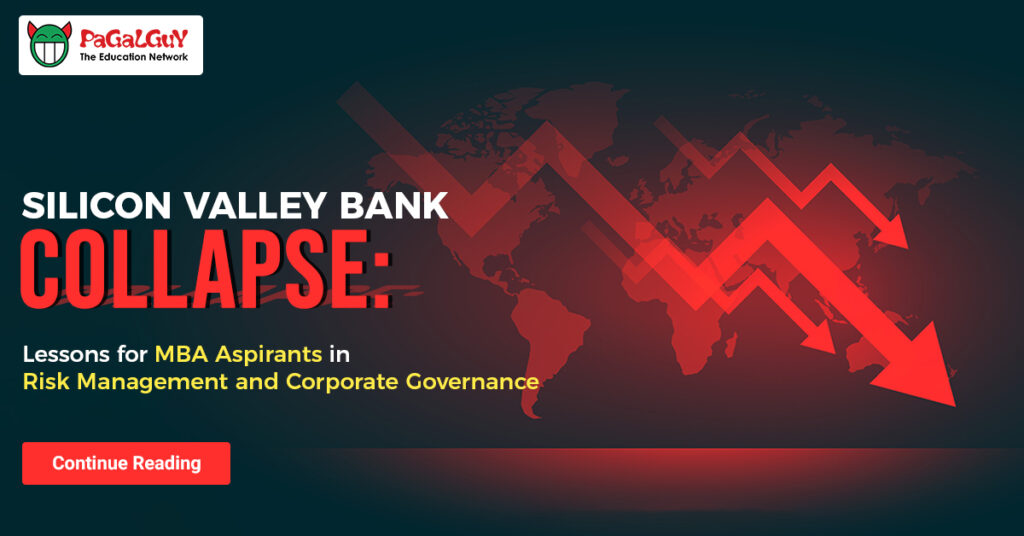The collapse of Silicon Valley Bank (SVB) has sent shockwaves throughout the financial industry, leaving many wondering how such a significant event could have occurred. For MBA aspirants seeking a career in banking or finance, understanding the reasons behind the collapse of SVB is crucial. The financial world was rocked on 10th March 2023 with news of the most significant bank failure since the Lehman Brothers collapse in 2008, inciting fears of a much bigger problem across the US finance industry. The California Banking Regulator’s decision to shut down the bank has sent shockwaves across the globe, with millions of dollars in wealth lost by stakeholders. As the investigation continues, market participants are bracing themselves for potential contagion and increased risk aversion.
This article delves into the reasons that led to the collapse of SVB, with a focus on the bank’s inability to cope with near-term market risk resulting from the steep hike in policy rates in the US and its impact on the bank’s portfolio of securities. MBA aspirants will gain valuable insight into the importance of risk management policies and asset liability management (ALM) in managing such risks. You will also learn about the significance of stress and back tests in improving a bank’s resilience to meet ALM needs in emergency situations. As the global economy continues to face challenges triggered by the pandemic and ongoing geopolitical risks, MBA aspirants will benefit from understanding how proactive risk management policies can adopt best practices in governance, risk, and compliance.
What factors contributed to the collapse of Silicon Valley Bank?
- SVB has been in the industry for 40 years, with an asset size of US $211.8 billion and 8553 employees working in its 29 offices. It has been lending to technology companies, revenue-based finance, and associates with venture capital funds and has a securities subsidiary.
- Interest rate risk and liquidity risks combined to create a liquidity crisis that led to regulatory intervention and the bank being put under Federal Deposit Insurance Corporation (FDIC) to liquidate it.
- The risk event was caused by a high deposit outflow due to a broader downturn in the tech startup industry, forcing the bank to liquidate securities worth US $21 billion and posting a loss of US $1.8 billion.
- SVB’s dependence on market-driven investments made them vulnerable to market risk volatility rather than creating loan assets. The exposure norms and business mix between investments and credit deployment should be synchronised to the likely risks to the bank.
- SVB announced it would raise $2.25 billion by selling common equity and preferred convertible stock to address its funding shortfall. However, this failed to impress investors, and the bank’s shares plummeted by 60%.
- On 10th March 2023, Silicon Valley Bank hastily sought out alternate means of funding, including the possibility of selling the company. However, the Federal Deposit Insurance Corporation (FDIC) ultimately declared the bank insolvent and took control of its assets and operations.
Is banking becoming a problematic career choice?
- SVB’s business model is common to most banks and focused on lending to tech startups and outfits. Borrowing short and lending long is an inherent risk for all banks.
- Banks need to manage risks associated with maturity and tenor transformation, and the efficiency of banks is measured by how well they manage these risks.
- Regulators and banks have risk management policies to manage asset liability management (ALM); the structural liquidity system captures asset and liability behaviour, maturity pattern, and future liquidity gaps.
- The risk managers plan to meet liquidity gaps by deploying excess funds and borrowing deficit funds. Banks also conduct stress tests and backtests to improve their resilience to meet ALM needs in different emergencies, this ALM mismatches have led to the risk event that proved costly to SVB.
- Innovative tech companies and startups face challenges amid the economic slowdown triggered by the pandemic and ongoing geopolitical risks, and coping with current threats will require proactive risk management policies and best practices in governance, risk, and compliance (GRC).
- Market risk is the type of risk that hits quickly and can be fatal for banks.
The collapse of Silicon Valley Bank highlights the fatal impact of market risk, which can hit any business or industry very quickly. This emphasises the need for efficient asset-liability management and proactive risk management policies. For MBA aspirants, understanding the banking industry’s underlying risks and challenges is crucial for building an effective risk management, asset management or corporate governance profile.
The collapse of SVB serves as a wake-up call for bankers/managers to prioritise their ALM skills and stress testing capabilities. MBAs must take a long-term view on ALM, regularly evaluate their business mix, and address business and control risks together. You must also prepare for unexpected risk events and collaborate with regulators and institutions to mitigate them. In the current dynamic financial environment, proactive risk management policies are essential to ensure resilience against crises.
Note for our readers: Pagalguy always strives to provide you with the most up-to-date and informative education news, student testimonials, and experiences. To stay informed about the latest on PG, subscribe to our newsletter.
